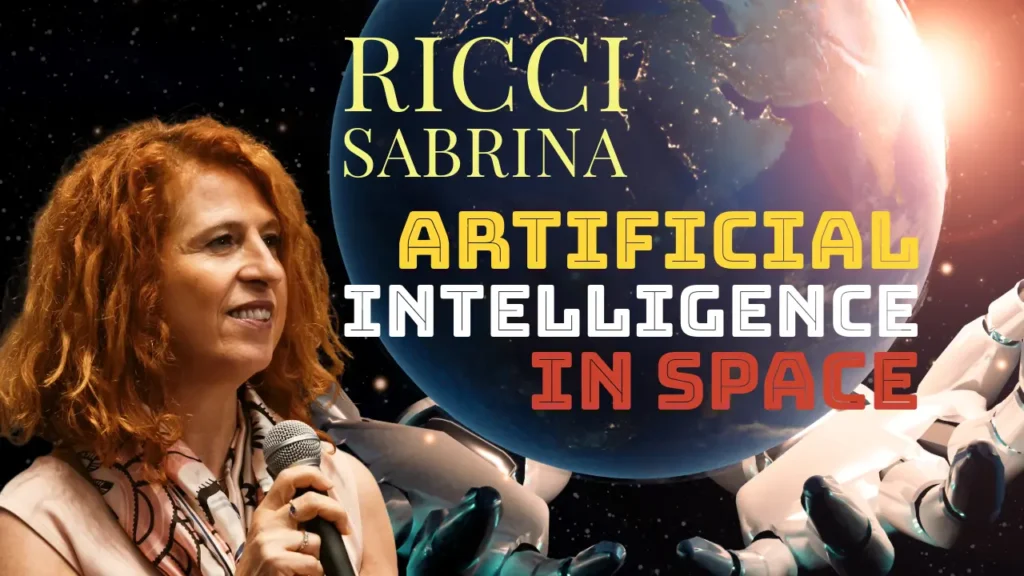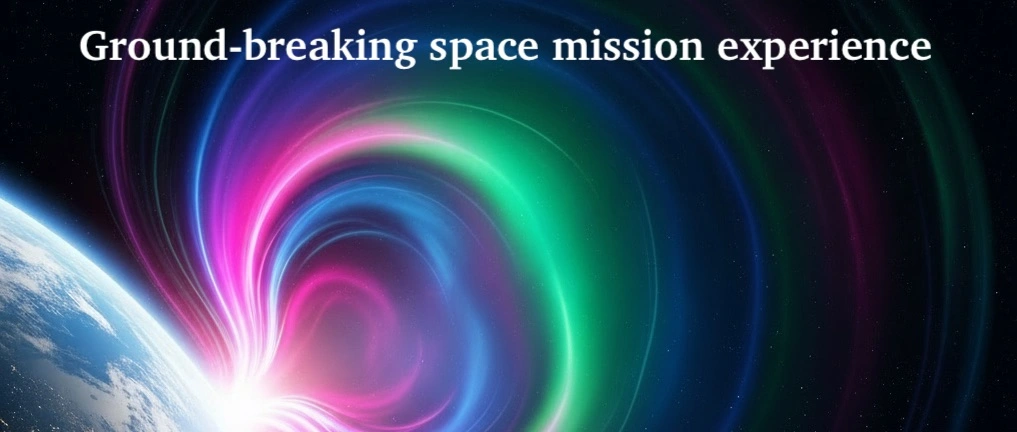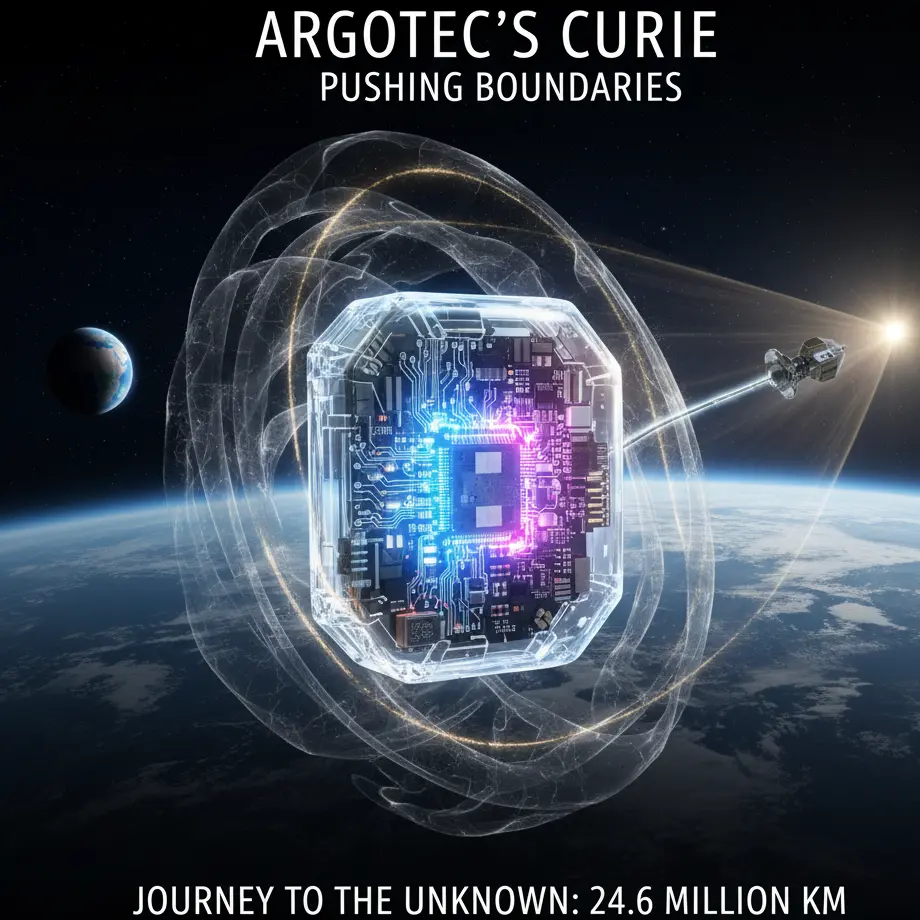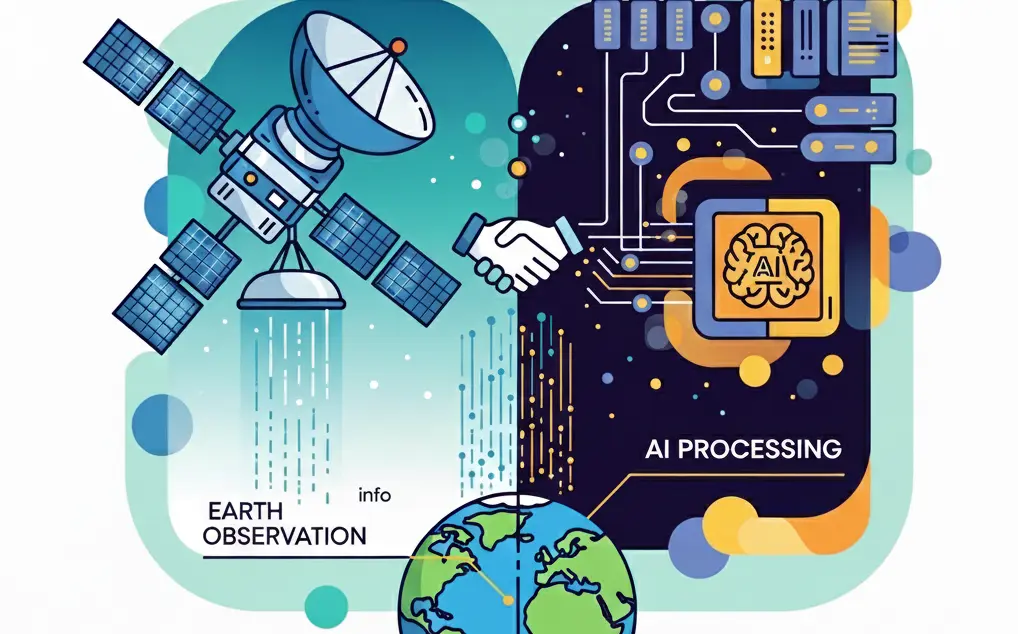
SABRINA RICCI
AI Ecosystem Manager at the ESRIN ϕLab
The SpaceInfo Club Had the pleasure to ask Sabrina Ricci some questions about her job, where Earth Observation meets a very trending topic nowadays: Artificial Intelligence. Enjoy the read!
Can you share insights into the role of an Artificial Intelligence Ecosystem Manager at ESA and how it contributes to the agency’s objectives in space exploration?
In my role as the AI Ecosystem Manager at ESA Φ-lab, I serve as a bridge between two distinct yet interconnected realms: the digital technology domain, which includes AI and beyond, and the space domain, particularly Earth Observation (EO). This unique position allows me to facilitate collaboration between these worlds, unlocking synergies that are often overlooked. The fusion of digital technologies with space exploration, especially in EO, yields significant advantages in harnessing satellite data. The resulting insights contribute not only to scientific endeavors but also to addressing critical issues impacting humanity and the health of our planet. The application of digital technologies to Earth Observation enables us to comprehend challenges more effectively and find innovative solutions for a sustainable future.
Having worked at both the Italian Space Agency and now at ESA, what unique perspectives have you gained regarding the integration of artificial intelligence in space missions and exploration?
My extensive experience, encompassing roles at both the Italian Space Agency and now at the European Space Agency, has provided me with invaluable insights into the integration of artificial intelligence in space missions. Working within these agencies has offered a comprehensive view of the space sector, allowing me to understand the specific needs of Italy and the broader European context. While each country operates independently, being a member state of the European Space Agency facilitates collective efforts and shared expertise. This collaborative approach strengthens the overall capabilities of the space community, fostering a cohesive and impactful contribution to space exploration on a continental scale.
Having worked at both the Italian Space Agency and now at ESA, what unique perspectives have you gained regarding the integration of artificial intelligence in space missions and exploration?
My extensive experience, encompassing roles at both the Italian Space Agency and now at the European Space Agency, has provided me with invaluable insights into the integration of artificial intelligence in space missions. Working within these agencies has offered a comprehensive view of the space sector, allowing me to understand the specific needs of Italy and the broader European context. While each country operates independently, being a member state of the European Space Agency facilitates collective efforts and shared expertise. This collaborative approach strengthens the overall capabilities of the space community, fostering a cohesive and impactful contribution to space exploration on a continental scale.
Notice Title
Earth observation refers to the process of collecting information about the Earth’s physical, chemical, and biological systems using various remote sensing technologies. These technologies include satellites, aircraft, drones, and ground-based sensors. Earth observation data provides valuable insights into various aspects of the Earth’s surface, atmosphere, and oceans, enabling scientists, policymakers, and other stakeholders to monitor and better understand our planet.
Some key applications of Earth observation include:
Environmental Monitoring: Earth observation data is used to monitor changes in the environment such as deforestation, urbanization, land cover changes, and pollution. It helps in assessing the health of ecosystems, tracking biodiversity, and identifying areas at risk of natural disasters such as floods, wildfires, and landslides.
Climate Change Studies: Earth observation plays a crucial role in studying climate change by monitoring indicators such as temperature, greenhouse gas concentrations, sea level rise, and ice melt. This data helps scientists understand the causes and effects of climate change and develop strategies for mitigation and adaptation.
Natural Resource Management: Earth observation data is used to monitor and manage natural resources such as water, forests, agriculture, and minerals. It helps in assessing crop health, predicting yields, monitoring water quality and availability, and identifying suitable locations for resource extraction.
Disaster Management: Earth observation data is instrumental in disaster management by providing early warning systems, assessing damage, and coordinating response efforts. It enables authorities to plan and implement effective strategies for mitigating the impacts of natural disasters such as hurricanes, earthquakes, tsunamis, and droughts.
Urban Planning and Infrastructure Development: Earth observation data supports urban planning and infrastructure development by providing information on population density, land use, transportation networks, and infrastructure assets. It helps policymakers make informed decisions about sustainable development, resource allocation, and disaster resilience in urban areas.
Weather Forecasting and Climate Modeling: Earth observation data is used in weather forecasting models to predict short-term weather patterns such as temperature, precipitation, and wind patterns. It also contributes to climate modeling efforts by providing long-term climate data for simulating future climate scenarios and assessing the potential impacts of climate change.
Scientific Research: Earth observation data is widely used in scientific research across various disciplines including geology, oceanography, ecology, atmospheric science, and hydrology. It supports studies on Earth’s systems, processes, and interactions, contributing to advancements in our understanding of the planet.
Overall, Earth observation plays a critical role in monitoring and managing the Earth’s resources, environment, and climate, ultimately supporting sustainable development and informed decision-making at local, regional, and global scales.
In your experience, what are some of the key challenges and opportunities in fostering collaboration between the public and private sectors in advancing AI technologies for space applications?
Fostering collaboration between the public and private sectors in advancing AI technologies for space applications presents both challenges and opportunities. One challenge lies in aligning diverse interests and priorities between governmental space agencies and private entities. Striking a balance between proprietary interests and the collective pursuit of scientific and technological progress is crucial. Additionally, ensuring data security, privacy, and ethical considerations in AI applications poses ongoing challenges. However, the collaboration opens significant opportunities for resource sharing, expertise exchange, and accelerated innovation. By combining the agility and innovation of private companies with the scale and resources of public agencies, breakthroughs in AI technologies for space applications become more attainable. This partnership holds the potential to propel space exploration forward, driving advancements that benefit society as a whole.
Embracing the Cosmos: World Space Week 2025 & SpaceInfo Club’s Mission
Leicester Scientists Bring Space Exploration to London as Cutting-Edge Telescope Joins SMILE Mission
A Cosmic Accident Solves Jupiter & Saturn’s Silicon Mystery
DWARF 3 vs DWARF 2 Smart Telescope: Is the Upgrade Worth It?
Argotec’s CURIE: The Electric Heart Driving Small Satellites to the Edge of the Unknown
Argotec and UniBap Forge Strategic Partnership to Power Next-Generation Satellite Missions
How has your background in the high education unit at the Italian Space Agency influenced your approach to developing educational initiatives related to AI and space exploration?
My experience within the High Education Unit at the Italian Space Agency profoundly shapes my approach to crafting educational initiatives intertwining AI and space exploration. This background has proven instrumental in forging partnerships and fostering networks within the realms of artificial intelligence and Earth observation (EO). Recognizing academia and emerging scholars as pivotal players in innovation, I’ve strategically directed efforts towards bridging the perceived gap between the domains of AI and digital technologies—rooted in computer science and mathematics—and the vast expanse of space exploration.
Central to this approach is the belief that community-building stems from robust outreach and education initiatives. By engaging with academia and nurturing the curiosity of young researchers, we lay the foundation for synergistic collaborations that propel advancements at the intersection of AI and space exploration. Thus, my tenure within the High Education Unit has instilled a holistic perspective, emphasizing the vital role of educational endeavors in fostering interdisciplinary dialogue and driving innovation forward.
In your opinion, how can the international space community collaborate more effectively to address common challenges and accelerate the development and adoption of AI technologies in space exploration?
In my view, effective collaboration within the international space community to tackle shared challenges and expedite the integration of AI technologies in space exploration hinges on several key principles, such as:
1. Open Data Sharing: Encouraging the transparent sharing of data across borders and organizations is essential. By fostering an environment where data is openly accessible and standardized, we can facilitate collaborative research and development efforts while avoiding redundancy and promoting innovation.
2. Interdisciplinary Partnerships: Embracing interdisciplinary collaborations is crucial. Bringing together experts from diverse fields such as AI, aerospace engineering, robotics, and planetary science enables a comprehensive approach to problem-solving and technology development. Collaborations could involve joint research projects, workshops, and knowledge exchange programs.
3. Standardization and Compatibility: Establishing common standards and protocols for AI applications in space missions is vital. This ensures interoperability between systems developed by different agencies and facilitates seamless integration of AI technologies across various space missions and platforms.
4. Capacity Building and Education: Investing in education and capacity-building initiatives is paramount. By providing training programs, workshops, and resources to space professionals worldwide, we can empower individuals and organizations to leverage AI technologies effectively in space exploration endeavors.
5. Public-Private Partnerships: Promoting collaboration between government agencies, academic institutions, and private companies can unlock new opportunities for innovation and resource-sharing. Public-private partnerships enable the pooling of expertise, funding, and resources, leading to more ambitious and impactful space exploration initiatives.
By embracing these principles and fostering a culture of collaboration and innovation, the international space community can effectively address common challenges and accelerate the development and adoption of AI technologies in space exploration, ultimately advancing our understanding of the cosmos and benefiting humanity as a whole.
With your experience in managing AI ecosystems, what advice would you give to aspiring professionals looking to enter the field of artificial intelligence, particularly in the context of space exploration?
For aspiring professionals entering the field of artificial intelligence, especially in the context of space exploration, I would emphasize the following advice:
1. Master AI fundamentals and space-related domains.
2. Stay updated on advancements.
3. Collaborate across disciplines.
4. Gain hands-on experience.
5. Network actively.
6. Prioritize ethical considerations.
By following these guidelines and pursuing opportunities to expand your knowledge and experience, you can position yourself for a successful and impactful career at the intersection of artificial intelligence and space exploration.
By embracing these principles and fostering a culture of collaboration and innovation, the international space community can effectively address common challenges and accelerate the development and adoption of AI technologies in space exploration, ultimately advancing our understanding of the cosmos and benefiting humanity as a whole.





